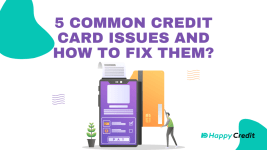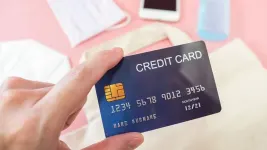What Is the Minimum Due With Respect to Credit Cards? [August, 2024]
Credit cards are helpful financial instruments that can benefit you when used wisely. On the other hand, they can just as quickly land you in serious debt. One such way to fall into credit debt is by only paying the minimum amount due every month. If you are wondering how this can be possible when this is an option provided by the credit issuer and you have been making payments on time, read on.
What is the Minimum Amount Due (MAD)?
The Minimum Amount Due is the minimum amount you, as a credit card holder, have to pay on or before the due date. Until recently, it was calculated at 5% of the total outstanding balance. A new directive by the Reserve Bank of India has raised that to 10% to better help cardholders from falling into serious debt.
Any unpaid balance from your previous billing cycle is also added to MAD, and so is the amount you exceed your credit limit. If you have any payments converted to EMIs, the EMI for that month gets added to your Minimum Amount Due as well.
While it is always good practice to clear off your outstanding credit card balance in full, there may be instances where you fall short of funds and cannot do so. In these specific instances, paying just the Minimum Amount Due does have a few benefits.
- By paying the Minimum Amount Due, you keep your credit card active and still have access to your available credit balance.
- You avoid getting a late payment fee added to your outstanding amount.
- Since you have paid the minimum due, you avoid “Default Payment” going on your credit history, which can affect your credit rating.
How is the Minimum Amount Due Calculated?
To better understand how Credit cards work and how the minimum amount due is calculated, let’s cover a few basics first.
Billing Cycle
Understanding a credit card billing cycle is paramount to better financial planning. The billing cycle is the period for which your credit card statement is generated. Your billing cycle starts from the day your credit card gets activated and usually varies between 27 and 31 days, depending on the month.
For example, consider that your credit card was activated on the 5th of April. Your billing cycle will be from the 5th of April to the 5th of May. The statement generated on the 5th of May will contain all payments you have made from the 5th of April till the 4th of May and will include any cash withdrawals as well as EMIs.
Any transaction made after the statement has been generated is reflected in the next statement.
Payment Due Date
The Payment Due Date, as the name implies, is the date by which you have to make a payment towards your outstanding balance. This can be done in full or by paying the minimum account due. The payment due date is usually between 21-25 days from when your billing cycle starts(the same as when your previous month’s statement gets generated). It is important to note that your payment due date will fall on the same day each month.
Going by the same example, if your statement gets generated on the 5th of every month and your bank has set the payment due date at 20 days, you will have to make a payment on or before the 25th of each month.
Pro Tip: This period between the 5th (when your statement for the previous month ends) and the 25th (Payment due date) is called the Grace Period and is the best time to pay your credit card bill. Credit agencies will see payments made before the due date as responsible credit behaviour, which will help boost your credit score.
How Is the Minimum Amount Due Calculated?
Based on the previous examples, these are the points to note:
Statement Generated: 5th of the month
Payment Due Date: 20th of the month.
Let us look at the table below for an example.
| Date | Transaction | Amount (In Rs) | Points to Note |
| 5th of April | Card gets activated | ||
| 6th of April | Purchase | 5000 | No interest is charged |
| 4th of May | Purchase | 5000 | No Interest is charged. |
| 5th of May | The Statement is Generated | Statement Generated for the previous month, i.e. from the 5th of April to the 5th of May. Total Amount Due: Rs 10,000Minimum Amount Due: Rs: 500 |
This represents one billing cycle.
If you pay the Total Amount Due in one go, there is no balance carried forward to the next billing cycle and neither do you have to pay interest. All transactions made from the 6th of May fall under the next cycle and remain interest-free.
Why Is Paying Only the Minimum Amount Due a Bad Idea?
Continuing with the previous example, now let’s look at what happens when you only pay the Minimum Amount Due.
| Date | Transaction | Amount (In Rs) | Points to Note |
| 6th of May | New Billing Cycle Begins. | ||
| 20th of May | Payment Made | 500 | Outstanding balance from the previous billing cycle: Rs 9500. |
| 25th of May | Purchase | 5000 | No longer interest-free as there is a balance carried forward. This amount will also incur interest at 3%. |
| 4th of June | Purchase | 5000 | No longer interest-free as there is a balance carried forward. This amount will also incur interest at 3%. |
| 5th of June | Statement is Generated | Interest accrued*Rs 585 | Statement Generated for the previous month, i.e. from the 5th of May to the 5th of June. Total Amount Due: 9500 + 10,000 + 585 = Rs 20,085Minimum Amount Due = Rs 1004.25 |
| 20th of June | Payment Made | 1004.25 |
*Calculation for Interest accrued
Interest on Outstanding Balance: Rs 9500 x 3% = Rs 285
Interest on the ‘amount spent during the billing cycle’- Rs 10,000 x 3% = Rs 300 (This would have been interest-free if the Total Amount Due was paid in full the previous cycle)
Total Interest to be paid: Rs 300 + Rs 285 = Rs 585
As you can see, paying your Minimum Amount Due gives you the illusion that your debt is sustainable. However, this is far from the truth. In the above example, your principal outstanding has doubled, and you are no longer entitled to the interest-free credit period.
Conclusion
All of us can run short of funds now and again. That should be the only time you should opt in for paying only the minimum amount due. Remember, Credit Cards carry the highest interest levels amongst all the other credit availing facilities, with interest ranging between 34%-42% per annum. Therefore, you should use and pay your credit card dues wisely.
FAQs
Q. How do I find out what my billing cycle is?
The dates for the billing cycle are usually listed at the very top of your credit card statement that is sent out every month.
Q. Can I change my billing cycle?
No, you cannot change your billing cycle. However, you can request that your credit card provider change your payment due date to help you better plan your payments.
Q. Does paying the Minimum Amount Due only affect your credit score?
By paying only the MAD, your total outstanding amount will increase over time. After a point, credit agencies will look at this and tag you as a heavy borrower, which can negatively impact your credit score.

Product prices and availability are subject to change. Any price and availability information displayed on merchant's site at the time of purchase will apply to the purchase of these products. HappyCredit is a participant in the Amazon Services LLC Associates Program, an affiliate advertising program. As part of this program, we may earn commission from qualifying purchases made through the affiliate links provided on this website. We only promote products on Amazon that we genuinely believe are of high quality and value to our audience. The inclusion of affiliate links does not influence our editorial content or product recommendations. Our primary goal is to provide useful information and help you make informed purchasing decisions.
Certain portions of the text in this article might have been created using AI tools and subsequently edited by the author to improve the overall quality and clarity of the content for readers.
![What Is the Minimum Due With Respect to Credit Cards? [August, 2024] What Is the Minimum Due With Respect to Credit Cards? [August, 2024]](https://happycredit.in/cloudinary_opt/blog/what-is-the-minimum-due-with-respect-to-credit-cards-ejqey.webp)
















